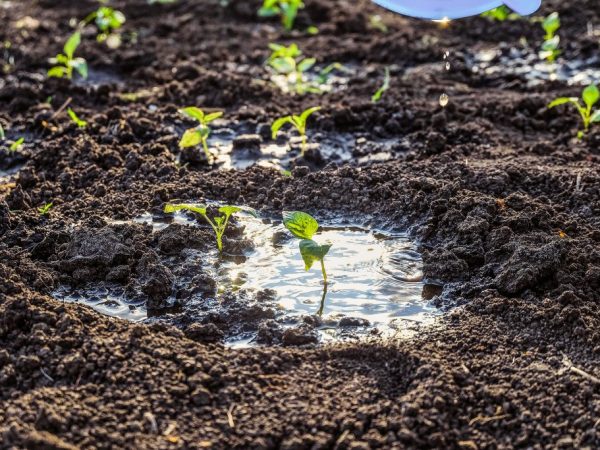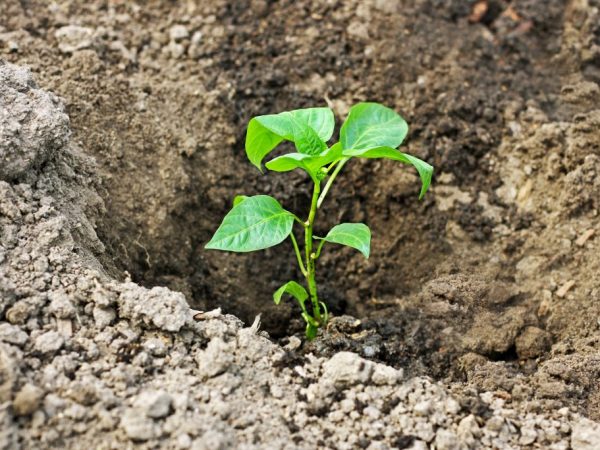How to plant peppers in open ground
Correct planting of pepper in open ground is a guarantee of yield. The growth and development of seedlings, as well as the quality of the crop, depend on this.

How to plant peppers in open ground
Landing features
When planting pepper seedlings in open ground, take into account the following features:
- the temperature of growing sweet or bitter peppers,
- the desired level of humidity,
- method of cultivation: as a rule, this vegetable crop is cultivated without pinching and pinching, however, for some varieties of sweet bell peppers and hot peppers, these procedures increase yields,
- illumination of the place where the landing is planned,
- soil condition: sweet and bitter varieties do not grow on acidic soils.
The most suitable varieties for planting in open ground are Gladiator, Ermak, Victoria, hot Chile, Vietnamese bouquet, Ukrainian and others.
Planting dates directly depend on the characteristics of the climate. In warm areas, disembarkation occurs in May, and in cold regions - in June.
Seat selection
In the open field, pepper does not grow well in the beds, next to which groundwater passes. This should be taken into account when choosing a place for growing. The problem with the occurrence of soil flows is solved by the construction of a high warm bed.
The area for growing vegetables must be protected from wind drafts. To this end, summer residents next to the place where bushes of sweet Bulgarian and hot peppers are planted often make a partition or a fence of plants. Good for this is planting corn in 1-2 rows at a distance of 0.7-1.0 m from the beds with pepper, which are sown 2-3 weeks before the transplant of pepper seedlings.
The soil
When planting pepper seedlings, the soil in open conditions should be fertile and moist.
Measures to improve the soil:
- Rotted sawdust (10 liters per 1 square meter of planting area), manure (in the same volume), peat (20 liters per 1 square meter of beds) are added.
- Add coarse river sand and rotted sawdust (1 bucket each).
- For peat soil, sod or humus is introduced, 10 liters per 1 sq. m.
- Peat or clay is introduced: 20 liters of humus with 10 liters of wood chips.
Fertilizers
Before planting, the soil for seedlings of peppers is fertilized: per 1 sq. m landings account for 1 tbsp. ash powder and superphosphate, 1 tbsp. l. potassium sulfate and 1 tsp. urea. When all the required nutrients are added, the earth is dug up and beds are made at a height of about 30 cm.The leveled soil surface is watered with mullein diluted with water (0.5 liters per bucket) or sodium humate (1 tablespoon per 10 liters of water).
The consumption rate of fertilizer solutions is about 4 liters per 1 sq. m.
Preparatory stages

Observe planting depth
To grow strong young seedlings for subsequent planting in open ground, you need to regularly carry out mineral fertilizing and water them correctly.
Top dressing
Pepper loves organic matter, which is recommended to be applied to the soil at intervals of every 10 days. Also, after picking, the plants respond well to foliar spraying.Among the suitable drugs, Kemira Kombi occupies a special place. This fertilizer contains many useful mineral components. The foliage is sprayed with a solution diluted with water, carrying out such an event in the morning, before the sun's rays begin to warm.
Yellow spots that appear on the foliage indicate a lack of a nitrogen-containing component.
Watering
For the full development of seedlings, along with the correct fertilization, regular watering is important. Watering young seedlings should be done so as not to overmoisten the soil and not make it too dry. Rarely conducted watering leads to leaf fall and general wilting, and excessive watering leads to a violation of the development of the bark system.
Hardening
Before planting the grown seedlings in open ground, they are hardened 2 weeks before the date of planting. They start with the removal of seedlings at a temperature of about 15 ° C, gradually lowering the degree to a mark of 11 ° C.
Landing technology
Having reached the age of 50-60 days with the appearance of 7-9 developed leaves, if strong internodes have formed, the seedlings are ready for planting.
The most suitable time for planting peppers is evening. Before transplanting to an open bed, the hardened seedlings are thoroughly watered: then they will not become lethargic and will not lag behind in development.
The installed pegs, to which the bush is subsequently tied, allow to protect young plants from breaking.
Vermicompost in an amount of 200-300 g is poured into each hole, a spoonful of ash powder and a spoonful of crushed eggshells, 1-2 liters of a weak solution of potassium permanganate are also poured.
Young peppers are planted in open ground at the same height at which they grew seedlings with a permissible depth of no more than 2 cm. Tall pepper varieties are planted in the center of the soil, and undersized ones - on the sides of the garden.
Disembarkation scheme
The planting pattern can be in rows, every 0.65 m with a distance between the bushes of 0.4 m.You can also plant sweet peppers in a square-nesting way according to the scheme 60 cm x 60 cm or 70 cm x 70 cm.Some summer residents prefer to plant young 2-3 seedlings in one hole, however, thickened planting leads to a decrease in yield.
To reduce the number of watering and the need for weeding, you can use the technology of growing on black film. This method involves planting peppers in open ground in holes made in a film, which is preliminarily covered with a fertilized, moistened and peat-mulched garden bed. In this planting, a 45 cm x 50 cm scheme is used.
After the young seedlings are planted, the seedlings take root slowly, therefore at this stage it is important to help the plants adapt to new, non-domestic conditions and improve air circulation by loosening the ground around the bush.
If the agricultural technique was carried out correctly, the Bulgarian sweet or hot pepper will delight the owners with taste and yield.


